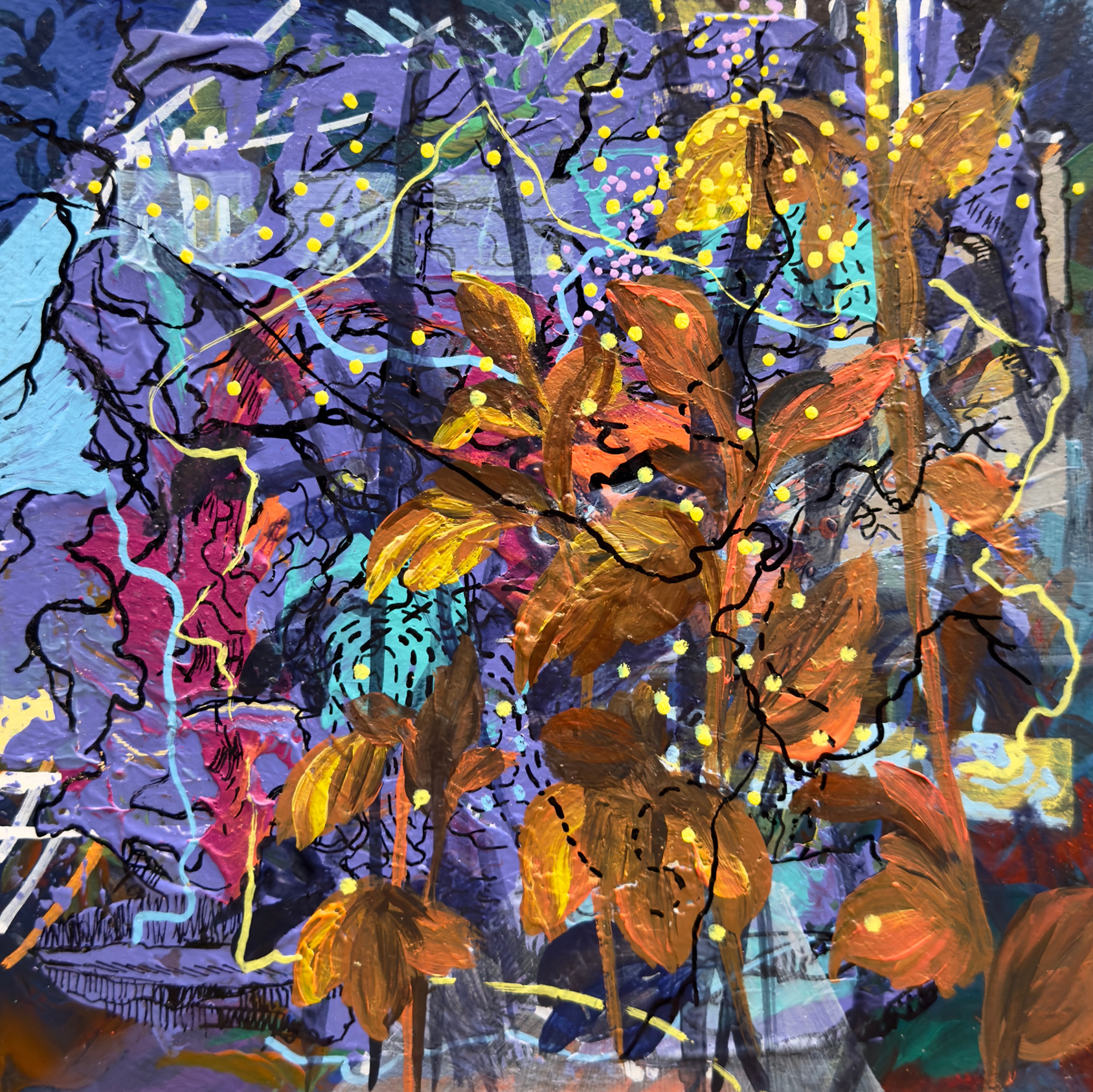
We have forgotten how to be good guests, how to walk lightly on the earth as its other creatures do. – Barbara Ward
We are excited to present “Clash”, a joint art exhibition by the contemporary artists Pancé Ahmed and Omar Senada, showcasing their latest collaborative project as both talents intertwine to create a harmonious fusion in their artworks.
“Clash” explores the juxtaposition between urban decay (the process whereby a previously functioning city, or part of a city, falls into disrepair and decrepitude) and the resilience of mother nature and the constant clash between one another. Through their multi-layered paintings, Pancé and Omar examine the influence of political institutions on the decay of society and how it projects on us as individuals, raising questions about the future of the environment amidst an age of overconsumption.
Through an archaeological lens, Clash tackles the environmental role that topography and politics play in shaping contemporary society. How the shades of urban grey took over nature’s beauty and garbage took over instead. The evolving cartography, as explored by the artists, becomes a symbolic reflection of societal shifts and their impact on humans. The artists also challenge the credibility of state institutions’ propaganda of Egypt’s prominence among nations when the truth, in their opinion, is far from that, leaving behind a society in decay.
The decay theory is a theory that proposes that memory fades due to the mere passage of time. Information is, therefore, less available for later retrieval as time passes and memory, as well as memory strength, wears away. The main reason this occurs in sensory or short-term memory is that we do not need to process and store all the information that we see in the world, so we simply do not recognize or recall it, and it just fades away. The Decay theory serves as a poignant parallel to modern society, where people can no longer face reality because they’re being constantly brainwashed.
Urban decay is the process whereby a previously functioning city, or part of a city, falls into disrepair and decrepitude. The cityscape transforms into a desolate and inhospitable environment marred by abandoned structures, political corruption, and the obliteration of natural and cultural heritage. The city now stands as a testament to the irreversible transformation brought about by neglect and unsustainable practices hanging on a thread by a society that is grappling with its own decline.
The repercussion of man’s reckless intervention that is lacking awareness and sustainability has become clear in the environment. The depletion of limited resources due to unsustainable consumption is rooted in capitalist and materialistic needs that disregard the future. Environmental deterioration is manifested in turning green spaces into urban buildings and industrial areas that pollute the environment, leading the artists to raise questions about the future’s potential for environmental redemption. Through a series of paintings, Clash aims to capture the layers of cement that entomb the city’s landscape, providing a visual commentary on the environmental challenges ahead.

Reflection
300 x 180 cm
Mix Media on canvas & wood
That’s an issue
200 x 100 cm
Mix Media on canvas & wood
Red Caution
150 x 70 cm
Mix Media on canvas & wood
Opposition
150 x 70 cm
Mix Media on canvas & wood
Clash
150 x 75 cm
Mix Media on canvas & wood
Presestance I
180 x 30 cm
Mix Media on canvas & wood
Presestance II
180 x 30 cm
Mix Media on canvas & wood
Never forget
50 x 70 cm
Mix Media on canvas & wood
The white flower
50 x 70 cm
Mix Media on canvas & wood
The guest
50 x 70 cm
Mix Media on canvas & wood
Alarm
50 x 70 cm
Mix Media on canvas & wood
From the City 1
20 x 20 cm
Mix Media on canvas & wood
From the City 2
20 x 20 cm
Mix Media on canvas & wood
From the City 3
20 x 20 cm
Mix Media on canvas & wood
From the City 4
20 x 20 cm
Mix Media on canvas & wood
From the City 5
20 x 20 cm
Mix Media on canvas & wood
From the City 6
20 x 20 cm
Mix Media on canvas & wood
From the City 7
20 x 40 cm
Mix Media on canvas & wood
From the City 8
20 x 40 cm
Mix Media on canvas & wood
From the City 9
20 x 40 cm
Mix Media on canvas & wood
About the artists

Pancé Ahmed and Omar Senada are independent Egyptian visual artists who studied oil painting at the Faculty of Fine Arts, Alexandria University and graduated in 2013. They trained as teaching assistants at the same university, then Pancé worked as a teaching assistant at the same college since 2015 and as an assistant lecturer in 2020. Omar worked as a curator at the Museum of Fine Arts in Alexandria and an independent exhibition coordinator. They conducted an independent study at Mass Alexandria Contemporary Art, Alexandria, Egypt 2016, Omar trained at MADRASSA (Regional Program for Residencies, Meetings and Training in Contemporary Artistic Practices) in collaboration with L’Atelier de l’Observatoire (Art and Research) Casablanca, Morocco 2017. Pancé obtained her master’s degree in fine arts in 2019, while Omar obtained his Masters in 2020. In 2020, during the COVID crisis, we conducted many joint experiments that became fruitful experiments due to the convergence of viewpoints and ideas, as we conduct research on the city and development, the demolition of aesthetic and archaeological buildings, and the emergence of ugly concrete, which led to the extinction of many plants and an attempt to emerge. Some plants among the
dilapidated buildings as a form of adaptation to the events.
